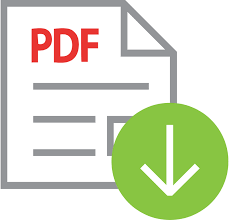Boost Converter Design Tools Simulink
- Home
- Vol 1, No 2 (2020)
- Mahmor
Design and develop a boost converter by using matlab simulink simulation
Norsa'adah Binti Mahmor(1 ), Norazila Binti Md Posdzi(2), Rasidah Binti Abdul Rani(3),
), Norazila Binti Md Posdzi(2), Rasidah Binti Abdul Rani(3),
(1) Department of Electrical Engineering, Ungku Omar Polytechnic, Negeri Perak
Malaysia
(2) Department of Electrical Engineering, Ungku Omar Polytechnic, Negeri Perak
Malaysia
(3) Department of Electrical Engineering, Ungku Omar Polytechnic, Negeri Perak
Malaysia
 Corresponding Author
Corresponding Author
Copyright (c) 2020 Norsa'adah Binti Mahmor, Norazila Binti Md Posdzi, Rasidah Binti Abdul Rani
DOI : https://doi.org/10.29210/81064000
Full Text: Language :
Language :
Abstract
This paper presents the design and development of a boost converter by using a resistive load. A booster converter is the most popular application in the industry to step up the direct current (DC) input voltage. This study focuses on determining the suitable value of the inductor and capacitor for use in the circuit. Then, this design focuses on continuous mode operation, with different voltage inputs of 9V and 15V DC, where the switching frequency input is 25kHz using the MOSFET as a switching device. The evaluation of this circuit design is to control the input voltage to keep the output voltage maintained at 24VDC. This analysis also uses a ripple inductor current, not more than 25% of inductor current, and output voltage ripple is less than 1%. The parameters for design circuits based on the output voltage, inductor voltage, and inductor current waveform. The design of this circuit will be analyzed using MATLAB Simulink software to verify the results between simulation and theoretical. Based on the simulation results prove that the developed model can maintain the output voltage by using different voltage input values. Finally, a boost converter circuit can be developing by using these parameters.
References
Abdessamad, B., Salah-ddine, K., & Mohamed, C. E. (2013). Design and Modeling of DC / DC Boost Converter for Mobile Device Applications. International Journal of Science and Technology, 2(5), 394–401.
Boujelben, N., Masmoudi, F., Djemel, M., & Derbel, N. (2017). Design and comparison of quadratic boost and double cascade boost converters with boost converter. 2017 14th International Multi-Conference on Systems, Signals and Devices, SSD 2017, 2017-Janua, 245–252. https://doi.org/10.1109/SSD.2017.8167022
Fathah, A. (2013). Design of a Boost Converter. Fathah, A. (2013). Design of a Boost Converter, 2. Retrieved from Http://Ethesis.Nitrkl.Ac.in/4811/1/109EE0612.Pdf, 2. http://ethesis.nitrkl.ac.in/4811/1/109EE0612.pdf
Hajighorbani, S., Radzi, M. a. M., Ab Kadir, M. Z. a., Shafie, S., Khanaki, R., & Maghami, M. R. (2014). Evaluation of fuzzy logic subsets effects on maximum power point tracking for photovoltaic system. International Journal of Photoenergy, 2014. http://doi.org/10.1155/2014/719126
Hossain, M. Z., Rahim, N. A., & Selvaraj, J. a/l. (2018). Recent progress and development on power DC-DC converter topology, control, design and applications: A review. Renewable and Sustainable Energy Reviews, 81(June 2016), 205–230. https://doi.org/10.1016/j.rser.2017.07.017
M. J. (2016). Design and Simulation of Boost Converters Suitable for Photo Voltaic Applications. International Journal of Research in Engineering and Technology, 05(11), 125–133. https://doi.org/10.15623/ijret.2016.0511024
Palanidoss, S., & Vishnu, T. V. S. (2018). Experimental analysis of conventional buck and boost converter with integrated dual output converter. International Conference on Electrical, Electronics, Communication Computer Technologies and Optimization Techniques, ICEECCOT 2017, 2018-Janua, 323–329. https://doi.org/10.1109/ICEECCOT.2017.8284521
Rai, J., Grupta, N., & Bansal, P. (2016). Design and Analysis of DC-DC Boost Converter. International Journal of Advance Research and Innovation, 4(3), 499. https://www.researchgate.net/publication/313439664
Rashid, Muhammad. (2017). Power electronic handbook (4th Edition). San Diego, California: Academic Press.
Saharia, B. J., & Talukdar, B. K. (2016). Theoretical study on performance constraints of a DC-DC buck-boost converter. 2015 International Conference on Energy, Power and Environment: Towards Sustainable Growth, ICEPE 2015, (May). http://doi.org/10.1109/EPETSG.2015.7510119
 Article Metrics
Article Metrics
 Abstract Views : 0 times
Abstract Views : 0 times
 PDF Downloaded : 0 times
PDF Downloaded : 0 times
Refbacks
- There are currently no refbacks.
Copyright (c) 2020 Norsa'adah Binti Mahmor, Norazila Binti Md Posdzi, Rasidah Binti Abdul Rani
This work is licensed under a Creative Commons Attribution-NonCommercial-ShareAlike 4.0 International License.
Boost Converter Design Tools Simulink
Source: https://jurnal.iicet.org/index.php/sajts/article/view/640
Posted by: whipplemintwoubity.blogspot.com

0 Response to "Boost Converter Design Tools Simulink"
Post a Comment